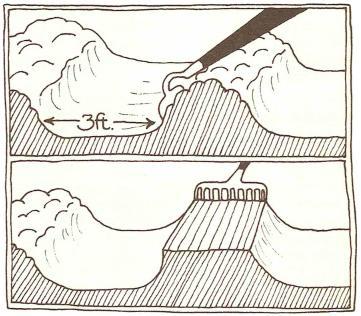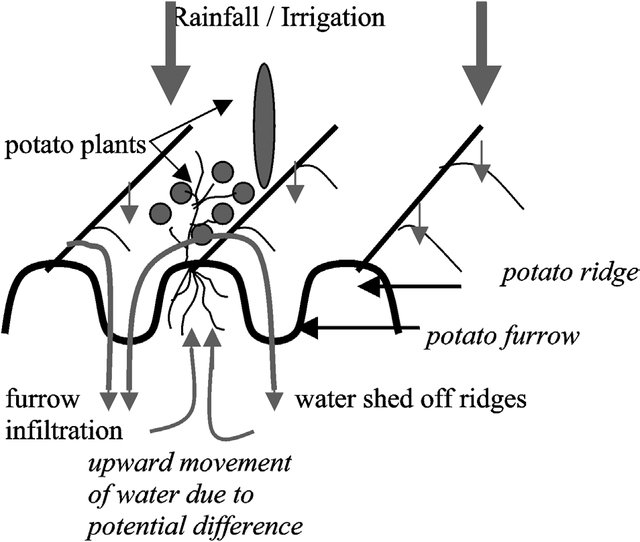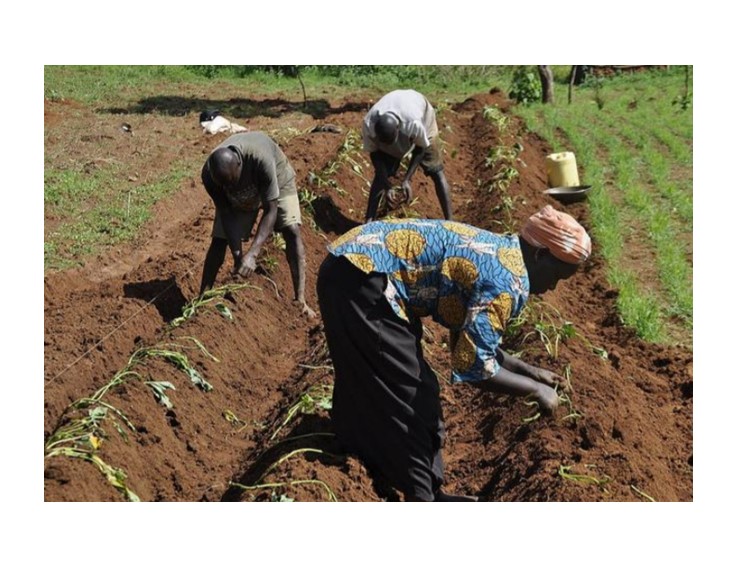Raised beds for sweet potato production and weed management
Summary
Growing sweet potato on soil beds that are raised above the surface has demonstrated to enhance tuber yields and lessen weed encroachment of the crop in many farming system across Sub-Saharan Africa. Raised beds are made of loosened soil that create the right bulk density and moisture conditions needed for sweet potatoes, especially benefiting the survival of cuttings and vines when planted fresh, and the formation and filling of tubers. Soil inside the raised beds does not become hardened or get water logged which otherwise restrict the growth of sweet potato and cause damage to below-ground parts of the crop by aggravating soil-borne diseases. By elevating the position of sweet potato crops on soil beds farmers prevent that weeds will rapidly overgrow the low-growing vines throughout the growing season. Raised soil beds can further be covered by mulching crop litter or plastic sheets that further improve soil moisture and weed control.
About the Solution
The installation of raised beds on a field starts by tilling and harrowing the soil to ensure it is not compacted and is kept free of weeds after planting. Soils beds are laid out in parallel lines at a distance of 90 centimeter or 3 feet that allow rainwater to freely drain from the surface. For constructing the beds farmers will heap up soil into ridges with a height of 30cm or 1 feet and subsequently flattened the top on which rooted cuttings and vines are planted at the desired spacing. The way soil beds are built is allowing for good aeration and drainage which are of key importance to make sweet potato crops grow vigorously, and also improve water use efficiency of irrigation systems. Reduced weed encroachment of vines on raised soil beds is stimulating uptake of nutrients and water, making the crop more resilient to episodic drought and pathogen attacks.
Cultivating sweet potato on raised beds is recommended for all types of agro-ecosystems in Sub-Saharan Africa because of widespread soil compaction and weed infestation that diminish the crop’s yield levels. The lower weed encroachment that is achieved through soil bed cultivation is beneficial to farmers that have limited availability of labour and financial resources. Soil beds offer advantages when and where rainfall is high by ensuring water drains away so that diseases like root rots and leaf wilts do not damage the root system. Under low rainfall conditions the use of raised beds on a farmer’s field will increase the retention of water in soils by lessening runoff.
Raised beds are usually made with soil from a farmer field that has been loosened to achieve the desired structure and drainage. Organic resources such as matured compost or crop residues can be added inside the soil beds or planting holes to improve the availability of nutrients and water to the crop. Soils may need treatment with chemical or biological agents to kill off root rots, nematodes and other common pathogens, or new soil needs to be brought from elsewhere to make the beds.
Simple tools like a handheld hoe and harrow can be used for preparing raised soil beds on farmer fields, or if available animal- and tractor-drawn plows that mechanically loosen and heap up soils. The common type of beds that is made of soil only have to be renewed after every harvest, while permanent beds constructed with plastic sheets, or wood and metal skirting, can last for several years. Disinfection of soils for controlling diseases and pests requires chemical agents, or soil heating techniques. If continuously growing potato then beds have to be replace with soil from an area where no sweet potatoes or nematode susceptible crops have been grown.
Commercialization
Commercially available
Solution Images
Institutions

Accompanying Solutions
Orange-fleshed sweet potato (Bio-fortified, Drought and virus tolerant), Specialty blended fertilizers (high potassium)



